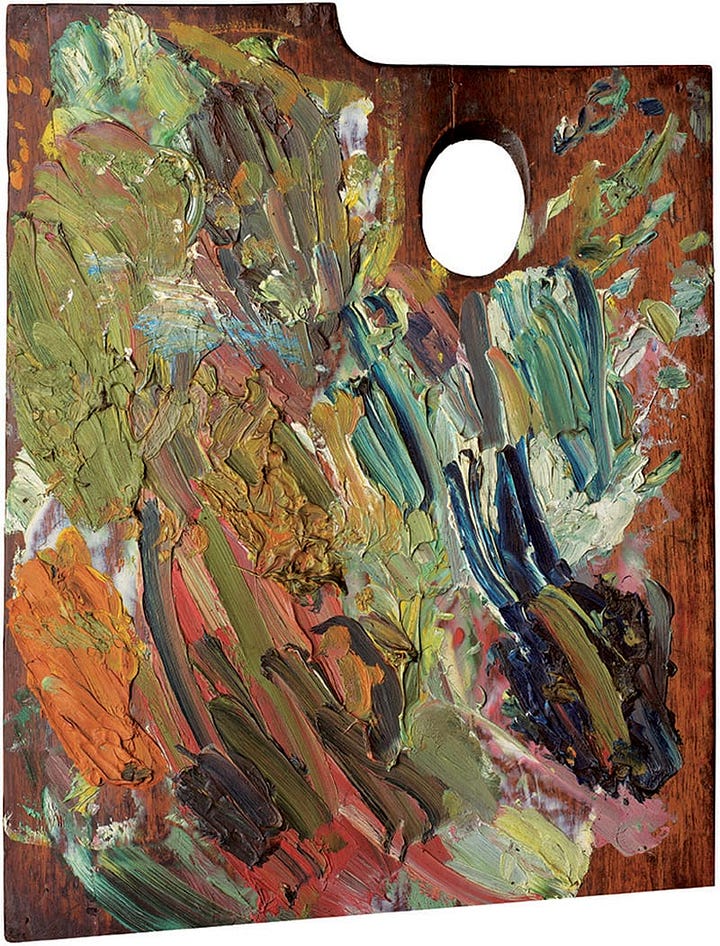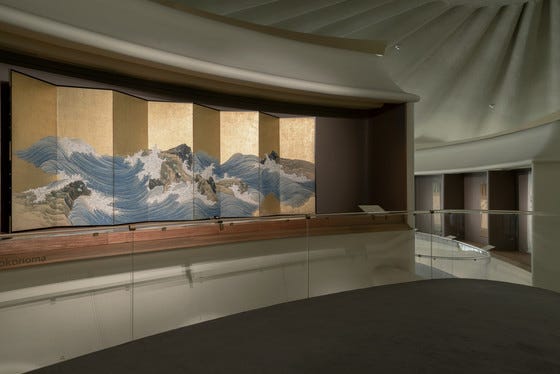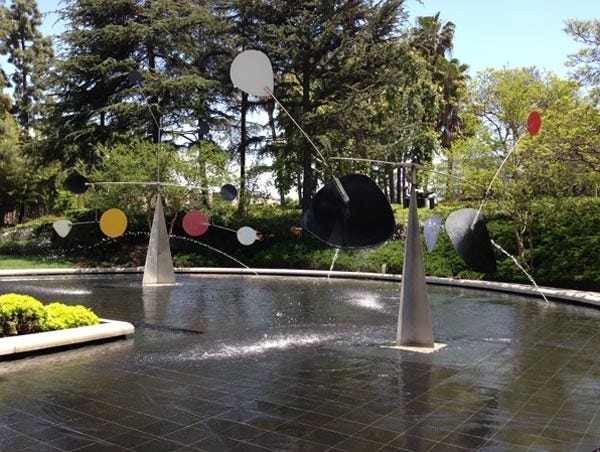“Why complete a work when it’s so beautiful just to dream it?”
- Pier Paolo Pasolini, The Decameron (1971)
Much has been said about the elusive artistic process. Some seek the muse for inspiration, attempting to reach for the sun for the approval of the divine oracle. Some get their inspiration from the excesses of the material world, spinning life out of nights out, decadence and excess turning into “material” for their art. Others need to meditate for four hours until they are pierced by the divine spark like an amateur Saint Sebastian. Then there are some aroused to the inspired creative call through the actual tangible material of the creative act itself. The ink well or typewriter for the poet, the bristle brushes and paint tubes for the painter. A palette of yesterday’s work becomes a tantalizing vision of what could be. The process is the art. A part of you perhaps never wants for it to end.
It is the creative act which lies at the center of inspiration for L’Eau Papier by Diptyque. The name in English translates to “water paper.” This perfume is meant to smell like ink and paper, specifically like ink drying on paper. Here is something I can understand. Perhaps we don’t talk enough about the scents of the creative act or is it that art has been stripped of it’s aroma in the digital space?


When I took art classes as a teenager, painstakingly capturing a white bowl with an apple, a pear, a blue glass vase nearby to complete the composition, I can recall the scents of the art studio. The turpentine quietly in the background every time your brush came up agains the metal coil in the jar. And the scent of oil paints was unlike any other; cadmium red and burnt sienna and cadmium yellow light and ultramarine blue and titanium white staining everything, taking over your palette, your canvas, your brushes, your clothes, your hair. (Or was that just me?) I can recall the fumes were so strong at times my teacher would leave the door propped open when the weather allowed. We were by the ocean, and you could smell sometimes the ocean if you were lucky. Saltwater and turpentine are an inspiration.
I stopped oil painting regularly after leaving art school but I always longed to be reunited with the materiality of it all, there is nothing quite like oil paints, and putting brush to canvas and I keenly felt this absence of material in my art-making until I discovered the darkroom. Yet there, instead of paint you have light, and instead of turpentine you have every other chemical and though the chemicals are colorless, they stain everything you own. The smell of the darkroom is indescribable. This combined with the darkroom environment creates the most subversive feeling to everyday life. You are plunged into a darkened room, lit only by two hellish orange lamps that are muffled suns and you feel like a moth being smothered. In this dim environment you create and wash your prints, I know the order now by heart. Developer. Stop. Fix. The process of making a photo in the darkroom gives me nostalgia for oil painting and is exciting in its own right. It’s a very appealing creative inferno. I can understand the plight of the photo maker. You are stained by chemicals, you are stained by darkness and flashes of light, and you lose hours catching light on paper to create an image. You go home and the scent of the darkroom clings to your clothing, your body, your hair, exposing a compulsion to creation as damning as that of a smoker.
I also have a typewriter I got in the last two years as a present. It is a vintage teal blue mechanical typewriter and for the longest time I could not figure out how to load the ribbon correctly. I am not mechanically minded and struggle with the needs of any machine. This was no exception. Several times, my ribbon got caught and I would have to rush to free it, my hands getting covered in ink in the process, and ah, we have finally arrived to an experience I can liken to L’Eau Papier.
I first tried this perfume a year ago and I don’t quite remember this perfume smelling so much like ink, all I could remember was a chemical cleanliness, clear lie vodka, and perhaps rice. This time, however, I can say it smelled immediately like ink straight from the vial and on my skin. It takes the experiences I have had with material as an artist and turns it into perfume. I never thought I would describe something that smells “inky” as beautiful but that is what Diptyque has succeeded in with L’Eau Papier. The dry down is what really makes it a lovely experience, as the ink settles on the paper, the perfume on your skin, you get enveloped in the warmth of the mimosa, blonde wood and steamed rice, the ‘white musks’ as Diptyque refers to them. It’s a very simple fragrance but manages to create such rich associations.


At the Los Angeles County Museum of Art (LACMA) there is the Pavilion of Japanese Art where the museum has a collection of Japanese traditional arts. I associate LACMA so much with the landscape of my childhood. I would balance on the edges of the fountain with its moving sculptures in the garden, and walk through the midcentury buildings with their muted colors, the warm wood, the quietness, the modernity that carried the whispers of a time when modernity was World’s Fairs and automatons. This is also the time and place of L’Eau Papier.
L’Eau Papier reminds me of the art that has shaped me, the art I have created, the art I want to create. The impressions come and go and what is most impressive is the fragrance manages to this with so little. L’Eau Papier is the nostalgia for being an artist, of missing the studio when you are parted, of waiting for the moment when you can return to your art and create endlessly.
L’Eau Papier is the story of the materiality of art and the dream of creation.





